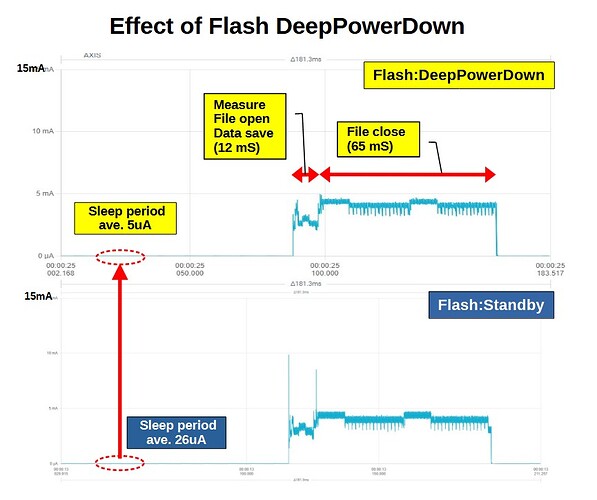In post 6, I did not know how to release the internal Flash from DeepPowerDown mode (DPD), so I used it without DPD. As a result, the current during the sleep period only dropped to 26uA.
Since post 7, we have discussed how to release from DPD, and I have confirmed that Flash will release from DPD using SPIClass.
Also, the BME280 breakout board had a mounted LDO and level shifter, which consumed current, so I changed to a breakout board that did not have these mounted.
With these measures, I was able to reduce the sleep current to 5uA. I think this value is almost the limit of the project using SystemONSleep mode and RTOS.
nRF52_XIAO_LightSleep_BME280_FlashSleep_LED_delay.zip (3.4 KB)
